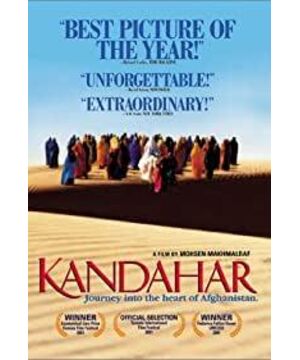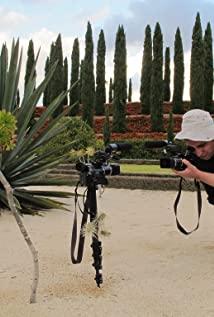This is the masterpiece of Iranian director Mohsen Makhmalbaf.
From the film, we see a poor surrounding environment, with yellow sand all over the mountains, human skin is generally eroded by wind and sand, and young children cannot escape. This is Afghanistan under the shroud of Islamic fundamentalism.
Ancient Afghanistan used to be part of Iran, and the border between the two countries was almost open. So it is not surprising that an Iranian director can go to Afghanistan to film freely. Judging from the overall expression of the film, a director who is not full of affection for this soil, and a director who has not been infiltrated in abject poverty can not shoot that kind of compassion anyway. On the contrary, it will become superficial if you are not careful. If the lens of a film is aimed at people's lack of food and clothing, poverty, and how people's eyes are filled with hunger, thirst and begging, it can only reach a superficial level of sensation at best. However, it is precisely because the film uses some more difficult to grasp side-by-side hitting techniques that we have an unbiased understanding of the overall state of existence of this human race that is not far from purgatory. These techniques seem to be funny, absurd and misplaced.
Except for the two or three protagonists, the film uses extras. This poses a challenge to the director's driving ability, because if he is not careful, the filming will be nondescript. Although we can see some traces of a documentary, it was eventually made into a feature film. Makhmalbaf incorporated these jerky actors into his macro shots and provided services for the film as a whole. It is very skillful and not easy. If you want to shoot the same type of film in China, this technique is worth learning.
The symbolism in this film: What does the little boy who acts as Nafas’s guide represent? This is undoubtedly an important role. Although the boy who played the little boy was obviously not a professional actor. But his very good performance makes us believe that people who are dead are very scary. The kid was expelled for reciting the wrong scriptures in school, and then ran into Nafas who wanted to go to Kandahar. No one knows what kind of thoughts passed behind his flickering eyes, but most of them will make people feel unpredictable. He offered to bring Nafa Ribbon to Kandahar and asked for 50 dollars. But no one knows what he will do next, whether he will fall here or there, whether he will betray Nafas for the 50 dollars that others will pay again. He seized a ring from the skeleton lying in the desert. When Nafas declined his leadership and wanted to send him away with money, he forcibly took out the ring and wanted to sell it for $1... What will this child be like when he grows up? The Koran that he should have believed in can no longer drive him to ignore his backache and forget himself in recitation. He randomly set aside the scriptures and closed his eyes to rest his mind. The opportunistic look in his eyes made it difficult for him to give people a sense of trust. He is no longer bound by any doctrine.
This is a typical person, representing the same type of people that may emerge in large numbers in the future.
The classic shot of this film: When the plane passed by at low altitude, artificial prostheses with parachutes were scattered from the tail of the plane. From the trembling camera we saw a large group of disabled people who had been waiting on the ground for a long time. Everyone flocked, you vie for me. What is the meaning of this scene? The prosthetic limbs cast by the Red Cross symbolize humanitarian aid imprinted with the spirit of Western Christianity, while their rescue targets are the most extreme fundamentalist nations in Islam. In order to carry out its extreme religious policy, the government of this nation could not hesitate to destroy the Buddha statues symbolizing paganism, but at the same time they enjoyed the relief brought to them by the same pagan Christian civilization... Makhmalbaf tactfully The Taliban made a joke.
The film received little attention when it first launched. But after the "911" incident, it attracted a lot of attention. People feel that they can understand a real Afghanistan, under the rule of the Taliban. Makhmalbaf's film as a documentary satisfies the curiosity of these people. As a feature film, this film also allows us to see some deeper things through different general lens sense and image organization ability. The film won the CANNES film festival ecumenical jury prize and UNESCO frederico fellini honor in 2001.
The music at the end of the film is a piece of percussion with Middle Eastern characteristics, gradually developing from slow to rapid. Finally, it ended with the chanting sound of the pupils leaning forward and backward.
View more about Kandahar reviews







